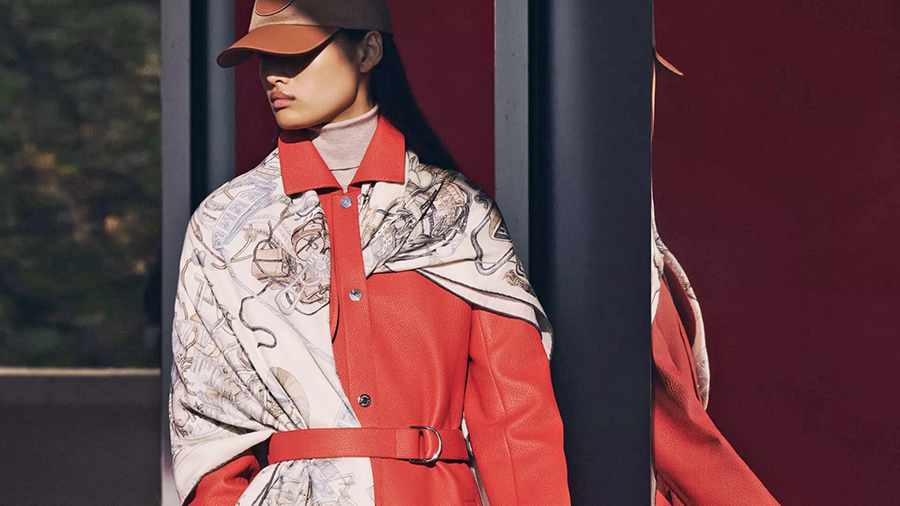Luxury consumption is expected to remain soft for the remainder of 2025 across key categories, particularly leather goods, makeup, and watches, as price fatigue and macroeconomic turbulence continue to weigh on consumers, according to the latest forecast from Bain & Company. If current trends continue, the management consulting company headquartered in Boston, MA, expects the sector to contract by 2 percent to 5 percent for the year.
Other factors restraining growth in the luxury sector include geopolitical and trade tensions, currency fluctuations, and financial market volatility, as well as “complex social and cultural shifts” that are causing luxury to lose favor with younger consumers.
Bain said in its report, “Luxury brands are contending with not only weakening consumer sentiment but also a growing disillusionment with their offerings among younger generations, notably Generation Z. This trend is calling into question the luxury sector’s long-standing price-to-value equilibrium as a growing group of younger consumers reassess their relationship with luxury.”
Multiple “Stresses” Face Luxury Sector
Other “stresses” weighing on the luxury sector include disruption across distribution channels. Bain said, “Distribution channels, especially physical and digital multi-brand outlets, are grappling with financial pressures as industry players seek to stabilize debt and preserve liquidity, with some engaged in restructuring.”
Bain’s call-out comes as Saks faces a liquidity crisis and Canada’s Hudson Bay is liquidating its stores.
Bain also said luxury’s “innovation engine appears to be losing momentum and appeal, while the creative leadership that is vital to the sector is under strain and rotating across brands.”
Finally, supply chains continue to face headwinds due to geopolitical challenges and increased regulatory oversight.
Bain’s report cautions that due to these disruptive forces, “turbulence may be luxury’s new baseline for an extended period,” with the €1.5 trillion revenue industry possibly facing its first slowdown since the global financial crisis of 2008/09, excluding the temporary setback caused by the pandemic.
Call For “Thoughtful Price Architectures”
Bain advised brands to focus on “strong product quality and thoughtful price architectures“ as well as “clear and differentiated brand identities“ to support more compelling value propositions in the luxury space.
“Although demand is easing in the short term, the luxury sector has consistently demonstrated an extraordinary resilience, buoyed by a growing global consumer base and deeply rooted emotional drivers,“ said Claudia D’Arpizio, senior partner and global head of Bain & Company’s Fashion and Luxury practice. “Across generations, drivers linked with self-reward, status, personal identity, and the celebration of achievements will continue to drive engagement, reinforcing and building the lasting relevance of luxury within its consumers’ lives.”
Federica Levato, senior partner and leader of the firm’s Fashion & Luxury practice in the EMEA, added, “As the industry faces an increasingly complex global landscape, luxury brands are entering a pivotal new chapter, one that demands sharper focus, greater cultural relevance and growth rooted in purpose. At the heart of this transformation is a redefinition of value and meaning that resonates across all generations —with those shaping luxury today and those who will define it tomorrow.”
Personal Luxury Goods Segment Sees Continued Declines
For the personal luxury goods segment, a strong post-pandemic rebound saw the market reach €369 billion in 2023. However, this figure slipped to €364 billion last year, down 1 percent at current exchange rates (flat on a currency-neutral basis), and for Q1 of this year, Bain & Compay expects to see a further decline of between 1 percent and 3 percent at current exchange rates.
Among categories in the personal luxury goods segment, jewelry, apparel and eyewear remain strong, with positive performance for “uber-luxury“ items, as well as in the aspirational segment. The fragrance market is benefiting from “premiumization,“ while the skincare market remains steady; however, the makeup segment lags. Watches, leather goods and footwear are facing headwinds “unless backed by true innovation,“ according to Bain. Bain added, “Even if the price points continue growing by 2 to 3 percent on average, brands are subtly reinforcing entry-price strategies to broaden their appeal without eroding brand equity, with winning cases underpinned by a combination of true newness and a unique brand point of view.”
U.S. and China Luxury Sectors Under Pressure
Regionally, Bain found that both the U.S. and mainland China, the two biggest luxury markets, are undergoing a period of softened demand due to current economic turbulence. Bain said, “Tariff-induced volatility is affecting the US market and consumers’ willingness to spend. In China, the country’s key middle-class markets are in ‘wait-and-see‘ mode.”
Despite this, the firm’s report points to some signs of recovery for the medium to longer term, with American consumers signaling an appetite for accessible luxury goods while high-spending customers remain resilient.
In both Europe and Japan, markets have suffered a decline due to weakening tourism, but local demand is partly offsetting the impact.
Europe is seeing continuing interest in jewelry and ready-to-wear clothing, particularly in destination markets and for value-driven formats. In Japan, limited-editions and beauty products are driving momentum. Conversely, luxury markets in the Middle East, Latin America and parts of Southeast Asia remain robust. Countries such as the UAE, Mexico and Indonesia are benefiting from strong local demand as well as new tourist inflows.
Profitability Remains Under Pressure
Profitability across the overall luxury industry remains under pressure. Despite the revenue peaks between 2018 and 2021, margins, defined by earnings before interest and tax (EBIT), have consistently lagged. From 2021 on, margins either stagnated or declined, even among top performers, highlighting the need for a more disciplined focus on performance improvement by the industry’s players to sustain short-term results while enabling longer-term strategic investments.
Bain said, “To guarantee future profitability and operational resilience for luxury businesses, technology, especially the use of AI, along with advanced clienteling, supply chain modernization, marketing technology, and more sophisticated pricing analytics, will be essential levers.”
Image courtesy Hermès
















